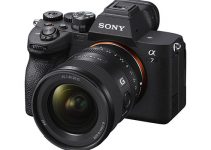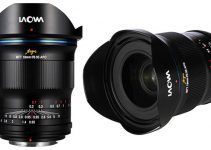Besides the plethora of extremely powerful features Blackmagic Design has already implemented in its leading colour grading and editing suite DaVinci Resolve 12, the app comes with another great tool worth mentioning – its Motion Tracker. Some people even compare it with the dedicated Motion Tracker in Mocha and the Mask Tracker in After Effects and put it on par with the latter in terms of functionality and flexibility it provides.
Whatever the case, the Tracker in Resolve is indeed one of the most powerful and enhanced features the software brings to the table as it’s something we can easily see in the video tutorial ahead where Casey Faris showcases a technique that he usually uses to track things in tricky situations when the object goes off-screen.
It’s obvious that when you need to track a moving object in the frame and even when it partially goes off-screen at some point in time, Resolve’s Tracker can do a fantastic job and achieve some decent results on its own. The occasions where things might become challenging though are when an object goes off-screen entirely. Generally, this is a rather tricky situation for any piece of software, not just Resolve’s Tracker.
Well, it seems that Casey Faris already has found a workaround and managed to nail the situation down. As shown in the above example, when he needs to track an object that goes off-screen, he simply enlarges the area of the Tracker window around it. Once the initial tracking is completed, he can easily alter the dimensions and orientation of the tracker window more precisely and place it around a smaller part of the image. Typically, you can easily combine object tracking and keyframing to animate windows.
For instance, you can use object tracking to make a window follow the position and orientation of a moving object, and then add dynamic marks afterwards to the window track of the correction in the Colour Page with which to alter object’s size and shape to better conform its changing form in the different parts of the clip.
It seems that this trick works like a charm in this certain situation. As Faris suggests it can also be utilized on many other occasions. Simply create a new Node and place the tracker window on the subject that goes off-screen, and make sure that you cover a larger portion of the frame around the object and then do the tracking.
This technique works seamlessly due to the fact that changing the Tracking window parameters afterwards doesn’t affect the already gathered tracking information so that you can easily resize the tracker window without to be worried too much about losing the information Resolve 12 has already gathered by eliminating the necessity to do any extra key-framing. Optionally, you can toggle between the Clip and Frame mode in the Tracker palette if you want to make additional tweaks and refinements to the Tracker window.
[source: Casey Faris]
Disclaimer: As an Amazon Associate partner and participant in B&H and Adorama Affiliate programmes, we earn a small comission from each purchase made through the affiliate links listed above at no additional cost to you.



